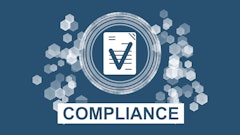
Warehouse signage and inventory labeling seems easy. You just need a printer, a roll of stickers and some signs to make it work and keep everything running smoothly. That’s it, right?
Not likely. Anyone who has tried a do-it-yourself system has probably found the task more difficult than expected. Not only is it tough to get things right, but mistakes can create serious bottlenecks, trigger unexpected downtimes and force costly mistakes.
That’s why a well-labeled warehouse – from signs in the aisles to inventory labels on the shelves – is a must for modern warehousing operations. With a professional labeling system and signage plan, new efficiencies emerge as the warehouse sees improved capabilities. Efficiencies can be gained by proper labeling, improving signage, streamlining traffic, managing floor layouts and printing labels on demand.
Efficiency 1: Avoid chargebacks and fines with readable labels
If your company is doing business with mega-retailers, you must be on guard for chargebacks due to unreadable barcodes. Regulated industries can also issue fines for non-compliant labels. This issue can often be resolved by fully understanding your customers’ barcode requirements and ensuring you print barcode labels at the right dots per inch (DPI), which measures the number of printed dots that can be placed in a line across one inch. A DPI that is too low, for example, causes labels to appear grainy or irregular.
Printer DPI has a big impact on label quality and readability by scanners. If the resolution is incorrect, scanners used by your customers might not be able to process shipments, which triggers costly fines or chargebacks and time-consuming corrective actions. With a full understanding of your customers’ technology and label expectations, avoid these setbacks and gain efficiency through higher processing speed and order accuracy.
Efficiency 2: Improve signage and safety
Not all signs are strictly intended for safety purposes – yet, in truth, every sign plays a role in keeping warehouse employees safe. For example, an aisle number sign is important for safety because it helps employees understand where they are and how to avoid picking mix-ups. Without this basic signage, employees are more vulnerable to a wide range of accidents and injuries resulting from confusion over such essentials like equipment protocol, inventory locations, load limits and forklift routes. The safest facility is one in which signage ensures everyone on the floor knows where they should be and how they should behave at all times.
Effective, efficient signage should broadcast company policies and safety rules as their basic purpose is to enhance situational awareness and promote expected behaviors. In some cases, these displays are dictated by fire codes and federal safety requirements. Common examples include those intended to direct forklift drivers, identify first aid kits or highlight the presence of fire extinguishers. Ultimately, each sign is another step toward the larger goal of a safe workplace. With fewer accidents and less confusion, the workplace naturally becomes more efficient.
Efficiency 3 – Streamline traffic and processes
Clearly labeled inventory, highly visible signage, easily scannable barcodes and an inventory processing system to smoothly monitor movement combine to holistically streamline traffic in a warehouse. Part of this effort is to make sure signage and labels function appropriately according to adherence needs, meet readability standards for both humans and electronics and don’t wear out too quickly. Meeting these requirements for both signage and labels is a strategic decision, and their failure on any facet can prompt unacceptable inefficiencies or even create hazards in the warehouse environment.
Signage and labeling considerations can vary dramatically from one warehouse space to the next, so needs for rack/shelving, pallet racks, storage bin/tote, floor labels and inventory labels should be addressed according to your specific needs. Once those needs are met, the next consideration is for ease-of-use by employees and how those labels are processed by the inventory system.
Efficiency 4 – Adapt your floor layouts
Seasonal demands and major inventory shakeups may require layout changes to the warehouse – aisles move, racks eliminated and shelving rearranged. When this happens, precise signage – such as aisle and rack numbers – can help warehouse employees re-orient themselves as they locate and manage inventory. Without this guidance, warehouses risk huge losses in productivity every time these kinds of layout adjustments occur.
To help facilitate these changes, there are two signage innovations that can be particularly helpful to rebuild efficiency after a floor change: magnetic signs and adhesive floor labels.
· Magnetic signs. Durable and versatile, magnetic labels are designed to attach firmly to metal surfaces, including shelving fronts, hanging signs and aisle markers. When there’s a change in inventory, you can remove them instantly, change the information and reapply in a new location as needed. These signs cost a bit more, but due to their adaptability and inherently durable nature, they are a great investment.
· Adhesive floor labels. In warehouses with wide-open floor space, most locations are marked on the floor, and adhesive floor labels allow that open space to be used to its maximum capability. As inventory shrinks, the space held for it can be reduced, and that adjustment can be indicated by moving adhesive floor labels to new locations. Adhesive floor labels are usually constructed using plastic composites and offer a quick but strong bond. They are durable, reusable and inexpensive. Applications include pallet lane marking, warehouse striping and more.
Efficiency 5 – Print on demand
While having in-house capabilities to print on-demand may sound like taking on more work and spur concerns of previous do-it-yourself failures, it’s actually the right way to further the efficiency of an operation. This efficiency begins by finding the right equipment to meet your specific logistics requirements, usually through a partner that specializes in inventory control technology. The right partner not only serves your immediate requirements, but also anticipates future needs and is available to troubleshoot when questions come up.
With in-house printing equipment, you can take control of the labeling process, helping avoid delays that pop up – such as waiting to have labels printed off-site. Another efficiency comes from not having to worry about printing too many or too few labels. You now have the agility to print according to your current demand – no more, no less. With control over the printing process that’s guided by the know-how of a quality system partner, you can quickly adapt your labeling to new regulatory demands, changes in customers’ needs and updates in inventory.
Making the warehouse work more efficiently
From signs at every aisle and labels on each pallet and rack, there are endless ways in a warehouse to make a mistake or create a bottleneck. That’s why it’s important for operators to capture efficiencies whenever they can. By coupling a custom-designed inventory management system with the right signage and labels, lost efficiencies can be quickly regained, allowing warehouse employees to focus on their core duty – getting products out the door.


























